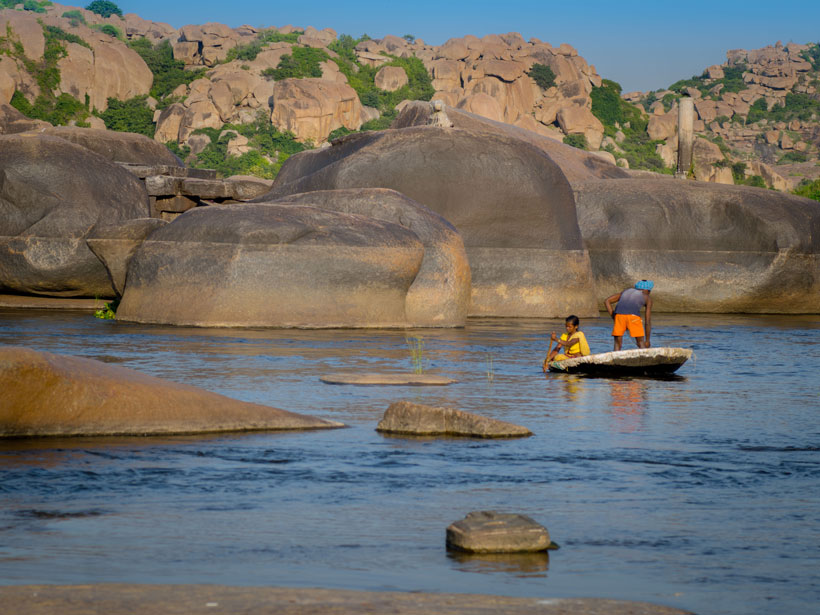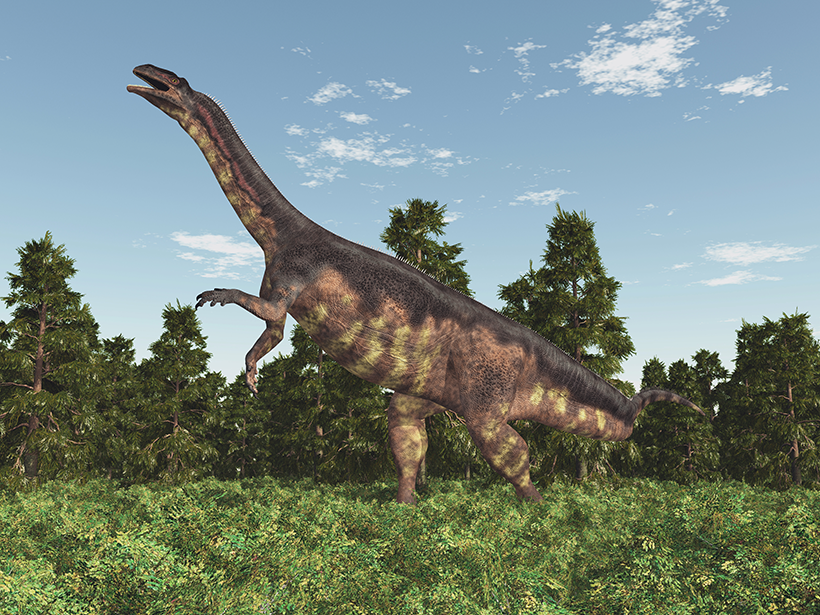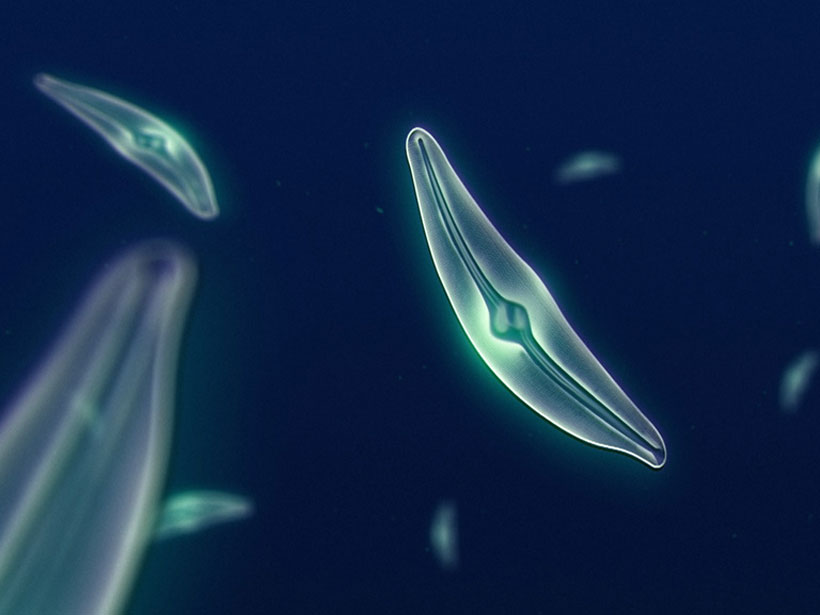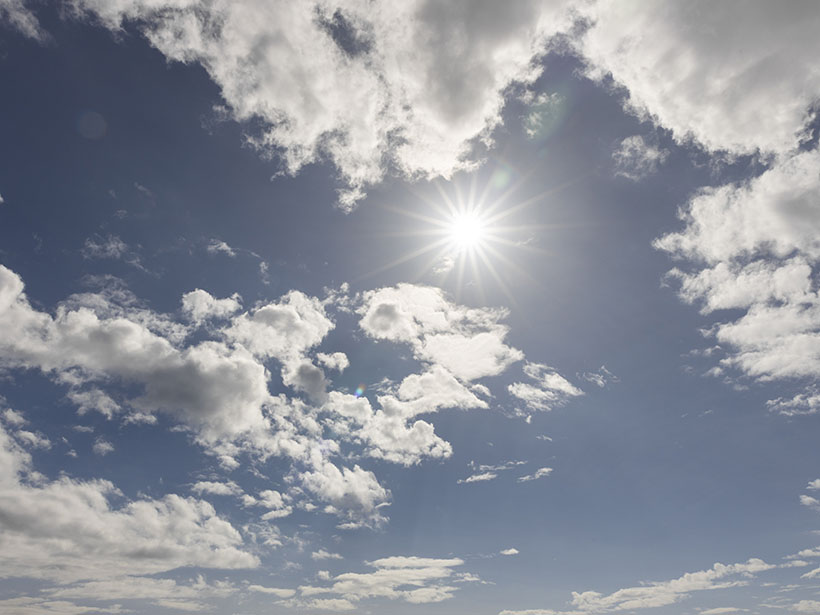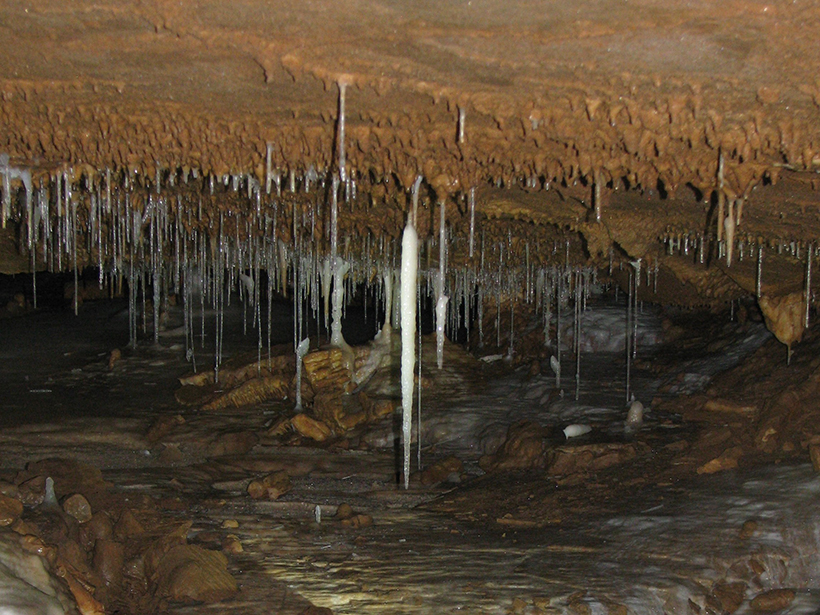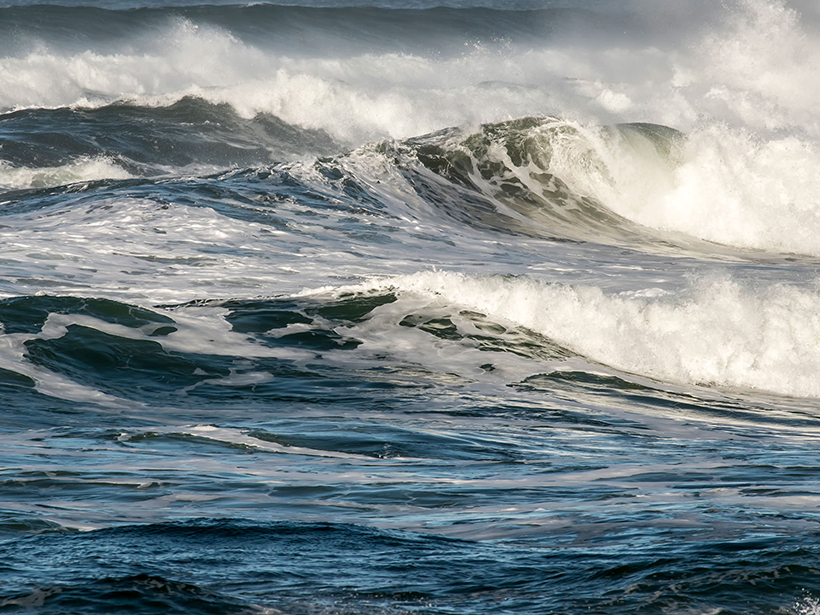A recent study on hematite formation during the Triassic may help predict the effects of climate change on contemporary monsoonal environments.
paleoclimatology & paleoceanography
Cratons, Why Are You Still Here?
How have these continental relics from Earth’s early history survived the plate tectonic mixing machine?
A Dip in Atmospheric Carbon May Have Facilitated Dinosaur Dispersal
Herbivorous dinosaurs migrated north across Pangea beginning about 214 million years ago, coincident with a downturn in atmospheric carbon dioxide levels.
How Did Diatoms Evolve to Swap Zinc for the Toxic Metal Cadmium?
New network analysis suggests that zinc and cadmium sulfides weathered simultaneously in geological history, making cadmium a suitable substitute in photosynthetic pathways when zinc was scarce.
Geologists Have a New Tool for Reconstructing the Ancient Climate
A new study of seafloor sediments finds that the temperature record in the early Paleozoic corresponds to significant shifts in the diversity of life on Earth.
Watering Down the Mantle
The cooling of planet Earth over time increased the water carrying capacity of the mantle and could have shrunk the oceans.
Ice Age Testing Reveals Challenges in Climate Model Sensitivity
Increased reflection of incoming sunlight by clouds led one current-generation climate model to predict unrealistically cold temperatures during the last ice age.
Improving Access to Paleoclimate Data
Paleoclimate databases are powerful tools for improving climate models. The recent work of speleothem researchers offers lessons on creating a lasting database and fostering the needed mindset.
Los océanos liberaron dióxido de carbono durante la última deglaciación
Un nuevo registro de isótopos de boro proveniente de sedimentos marinos del Pacifico Sur, ofrece una imagen más completa del intercambio de dióxido de carbono entre el océano y la atmósfera durante el Pleistoceno tardío.
Dust on the Wind
A new study confirms that an important wind system is shifting due to climate change.


